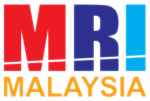Aziz Ansari’s Modern Romance starts by having an anecdote in regards to the tyranny of texting — an account regarding the agony and ecstasy related to looking forward to an answer text while you’re watching the “…” bubble develop into a completely formed message. The newest York circumstances labels the hold off between texting being a cause that is possible of anxiety. Seventy-nine per cent of cordless readers when you look at the U.S. state they text generally speaking, based on Nielsen Cellphone Insights, with U.S. smart phones users 18 and older investing 4 hours and 39 moments on interaction apps each according to Nielsen Electronic Mobile Measurement month. And so the real question isn’t if you’re able to reach somebody by having a mobile message. It’s where and when.
Inside our deep research regarding the metrics behind Drake’s Hotline Bling, we had been amazed to discover that dating application usage does not peak as belated during the night once we thought it could. In reality, it peaks during primetime. But there are lots of seafood when you look at the ocean and a great amount of apps to pick from, therefore we dove just a little much deeper into this evolving kind of contemporary interaction.
To start out our research, we viewed trends across OkCupid (OKC) and Tinder, two popular dating apps that had been launched eight years aside and also have notably various approaches to internet dating. For instance, OKC has a tendency to draw a early morning audience that seems to expend time checking matches and communications if they get right up and prior to sleep. At 6 p.m. (normalized for panelists’ regional time), there’s an inflection point where Tinderers begin to make use of their software a lot more than their OKC counterparts. 10 p.m.-11 p.m. receives the most time that is usage both apps.
Once we have a look at unique market, we come across that a bigger percentage of all of the OKC users sign in both in the morning and ukrainian mail order bride evening. On Tinder, the likelihood that is user’s sign in between noon and midnight is certainly caused by flat at about 40%.
Exactly what about other communication apps? Not in the arena that is dating our share-of-minute analysis discovered a handoff from 1 software to another through the day. Among Twitter Messenger, Snapchat and Tinder, Twitter Messenger use is busiest regarding the three from until 2 p.m., which is when Snapchat takes over the share of minutes morning. Whenever 8 p.m. hits, Tinder hits its stride.
While period of definitely drives peak usage for each app, our research found that more than 20% of the Facebook Messenger, Snapchat and Tinder app users check in at least once in each hour block of the time day. Snapchat leads in share of users. 60 % or even more of Snapchatters open the software one or more times during most hours of this day.
Additionally there are an apps that are few blur the lines between social media interaction and texting.
Inside this genre, usage across Tumblr, Twitter, Instagram and Twitter Messenger follows remarkably constant bell curves. Just at do the apps begin to show their colors night. Facebook Messenger gives way a touch prior to when Twitter and Instagram, and Tumblr’s share of moments does not drop until a bit later into the evening. This month through the middle of the day from an audience perspective, Facebook’s products draw a higher share of their active users. Regardless of the news, we do see individuals up quite belated.
E-mail apps follow quite similar styles through the day, except for a regular surge in Microsoft Outlook mins within the afternoon. And our regular e-mail activity reveals so just how embedded this technology is in mobile user’s everyday lives. The share of unique market is more than 20% after all hours of this and can climb as high as 65% night. Which means over fifty percent of users check always their email one or more times every one of those hours. For comparison, we included use trends for Kik, a messenger whose market skews younger than e-mail, to emphasize just how app use can mark the change from young adult to expert life.
Given that we’ve looked at interaction styles over the app landscape, focusing on how to connect — and on which app — should be just a little better. Having direct understanding of which stations are many traversed so when will help communicate a note in the right spot and right time. The information should provide some convenience in realizing that at nearly every period of day, if there’s a will, there’s a method to touch base.
Methodology
Nielsen’s Electronic Cellphone Measurement (EMM) is an observational, user-centric approach that makes use of passive metering technology on smart phones to trace unit and application use on a convenience panel that is opt-in. Answers are then reported out through Nielsen Cellphone NetView 3.0. Nielsen’s on-device software, that will be set up with permission on panelist smart phones (about 9,000 panelists many years 18+ with Android os and iOS devices). The panelists are recruited on line in English and include Hispanic, African-American, Asian-American, Native American and Alaskan Native, as well as other mixed background consumer representation that is racial.
